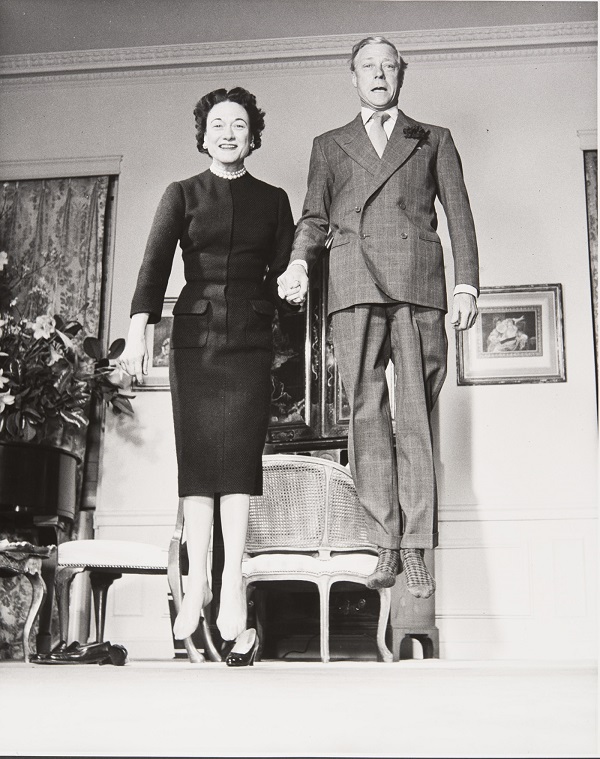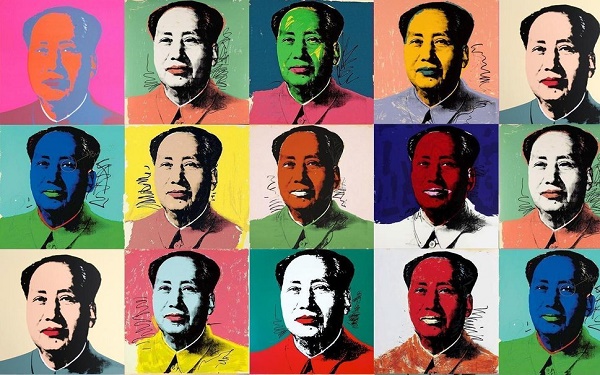Ha! Yes, of course, Philippe Halsman, the photographer who would make his models jump in the air so as to allow them to relax and express their true personality! Indeed, this is what first comes to mind when one thinks about him (and, indeed, seeing how superbly ridiculous the Duke and Duchess of Windsor appear, one can imagine the amount of work necessary to loosen up the posing models). Continue reading
Monthly Archives: November 2015
A Mystical Warhol?
With one exception (but what an exception!), if you are familiar with Andy Warhol’s work, you will not discover new artworks in the exhibition Warhol Unlimited at the Musée d’Art moderne de la Ville de Paris (until February 7). You will find the well-known flowers and cows, Jackie and the electric chairs, Marilyn and Mao, Campbell and Brillo. The exhibition’s strongest point (until its penultimate room) lies in its scenography, which is remarkable. This well-thought use of space is also crucial to Warhol’s art since it was first and foremost an art of the exhibition, a game of repetition that undermined the very role of the museum. Warhol’s œuvre is carefully contextualized as well, from the texts on the walls to the catalogue (which emphasizes a lot Warhol’s positive reception and discussion in criticism).
I had two striking experiences during the exhibition, first, to wander in the Screen Tests room (in which Duchamp is the coolest by far), where Empire and Blow Job are also shown, but not Couch, too rarely featured. Second, to be saturated with images and sounds in the hallucinogenic reenactment of Ronald Nameth’s Exploding Plastic Inevitable.
Save for the last room, the large curved room of the MAMVP, all of this would only amount to an informative revisiting of Warhol within common well-marked areas and, at least in my eyes, with an heightened sense of scenography.

Andy Warhol, Shadows, 1978-79, acrylic paint and silk-screen printing. ph. Bill Jacobson, courtsey Dia Foundation & MAMVP.
In this last room are displayed the 102 silk-screened canvases of the Shadows series, in 17 colors, stretching on 130 meters. What are we in front of? First, an immersive experience, a universe that completely surrounds us and resonates with us (Mark Loiacono mentions the Scrovegni Chapel in a remarkable essay from the catalogue titled “Disco Mystic” after Lou Reed, a piece of writing to which I am indebted). Then, an enigmatic pattern, like an illegible detail of an over-blown-up photograph, like a play between positive and negative: the master of shadows, Victor Stoichita, writes about a sort of passing of the torch, from de Chirico’s stories of shadows to Warhol’s story-less shadows (de Chirico died a month before Warhol started working on this series). Also, in some way, we experience a mystical feeling, almost a religious one (Dagen reads it as funereal; on the contrary I see a jubilant ecstasy). The series were commissioned by Heiner Friedrich (who was overwhelmed by the Giottos in Padova, precisely, and who spent a whole night alone in the Rothko chapel) and Philippa de Menil (daughter of the famous couple of art collectors) who met Friedrich at this occasion and went on to marry him seven year later. The couple converted to Islam afterwards, practiced Sufism, dared to make a mosque out of an old fire station in New York, and founded what became the Dia Foundation. Maybe this mystical relation to God, unmitigated, is the very thing Warhol translated in this series (he was far from indifferent to religion himself). Or, in any case, we can experience such a feeling in this final room, if, following in Warhol’s footsteps, we open our minds, and let them flow outside the museum and the artworld.
Read this article:
in the original French; alt.
in Spanish
Original publication date: October 21, 2015.


